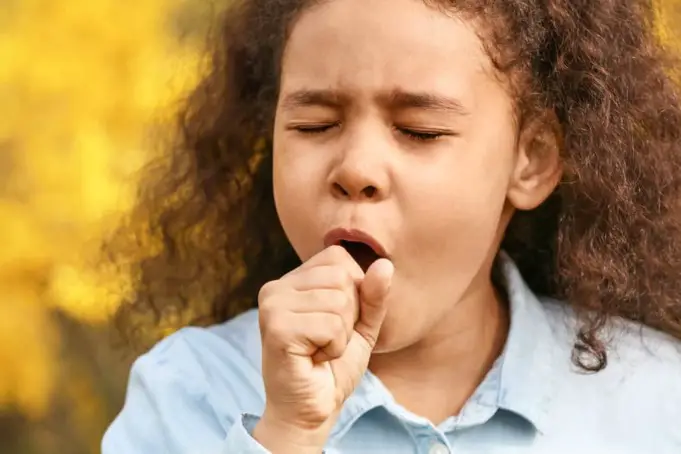Whooping cough, also known as Pertussis, is an extremely contagious respiratory infection caused by the bacteria Bordetella pertussis.
At first, the symptoms are typically similar to those of common cold caused by a virus, with fever, mild cough, and runny nose.
This is followed by coughing fits that make it difficult to breathe. The coughing may last for up to 10 weeks or more; that is why whooping cough is also known as the 100-day cough.
The coughing fits may be so severe that the person may break bones, vomit, and become quickly exhausted from coughing. Whooping cough affects people of any age, but children are most especially at risk.
According to the Centers for Disease Control and Prevention (CDC), whooping cough was one of the most common causes of childhood deaths in the United States in the 1900s. Until the 1940s, when the vaccine was made available, there were more than 200,000 cases of whooping cough reported annually.
Furthermore, whooping cough still is a significant problem in developing countries. Children less than 12 months old may experience mild coughs but have periods where they do not breathe.
Cause
Whooping cough is caused by the bacterium Bordetella pertussis, an airborne disease that spreads quickly via the coughing and sneezing of an infected person.
It has also been suspected to be present in wild animals, although this has not been established. However, whooping cough has been observed in primates, especially wild gorillas. Most zoos vaccinate their animals against whooping cough.
Stages of Whooping Cough
The incubation period of whooping cough is typically about 7-10 days and occurs in three stages.
Catarrhal Stage
This initial stage is characterized by the onset of runny nose, sneezing, mild fever, and occasional cough.
These symptoms are similar to the common cold and easy to dismiss. Gradually, the cough becomes severe as it enters the second stage. Fever is usually mild through the duration of the disease.
Paroxysmal Stage
This stage is characterized by severe coughing fits with a distinct whooping sound. It is the stage where the disease is diagnosed. The patient has typical bursts of quick coughs due to difficulty expelling thick mucus from the passage that allows air into the lungs.
At the end of the burst or paroxysm, the effort used to inhale is accompanied by the characteristic high pitch whoop, giving it its name. At this stage, vomiting and fatigue often follow a coughing fit.
The attacks from this stage occur more often at night, with an average of 15 attacks in 24 hours. The attacks may increase in frequency during the first 7-14 days of the disease, remain at the same level for 14-21 days and tapers in frequency. This stage typically lasts for 1-6 weeks but may persist for up to 10 weeks.
Convalescent Stage
In this stage, recovery occurs gradually. Coughing becomes less paroxysmal and eventually disappears in 2-3 weeks.
Coughing fits may, however, return many months after with subsequent respiratory disease for many months after the onset of whooping cough.
Signs and Symptoms of Whooping Cough
The symptoms of whooping cough include;
- Severe coughing fits
- Cyanosis (blue skin)
- Low-grade fever
- Dehydration
- Breathing difficulties
Who is at risk?
Whooping cough is the most ubiquitous and severe in young children. Symptoms are less severe in adolescents and adults, and it may sometimes not even be recognized as whooping cough.
Women are more affected than men. Whooping cough occurs in most regions of the world, and the outbreaks are not dependent on the changes in seasons.
According to the World Health Organization (WHO), there are about 60 million cases of whooping cough annually worldwide, and approximately 500,000 to 1,000,000 people develop life-threatening complications.
The vaccine has been made available since the 1940s, and this has helped in reducing cases of whooping cough. It is, however, not completely effective in preventing the spread of the disease.
During whooping cough endemics, a person’s susceptibility to the disease increases with the amount of time that has elapsed since their last immunization.
Diagnosis
Diagnosis of whooping cough is based on clinical history as well as physical exams that would be performed by a medical professional.
Samples of mucus would be taken from the nose and throat and would be tested for the presence of Bordetella pertussis bacteria. Blood tests will also be taken to confirm the diagnosis.
Treatment
The treatment of whooping cough involves administering antibiotics that will get rid of the bacteria from the throat of affected persons, usually within three to four days.
The diseases would no longer be contagious by the fourth day. An example of an antibiotic to be administered is erythromycin, and it is given routinely because it prohibits transmission to others.
Antibiotic therapy may also be prescribed to those that may have been exposed to the affected person, especially children. In cases of erythromycin intolerance, a combination of trimethoprim-sulfamethoxazole is recommended.
In severe cases of whooping cough in infants, they should be kept in a dark and quiet room, and be disturbed as little as possible to prevent triggering severe coughing episodes.
They should be closely monitored, and proper attention should be paid to the nutritional needs of affected infants. Small portions of food should be given as often as possible. Cough syrups and sedatives should be avoided.
Furthermore, in severe cases, whooping cough in children, hospitalization is recommended. Oxygen may be required in cases of cyanosis
Complications
Serious complications in infants include;
- Pneumonia
- Brain damage
- Delayed or halted breathing (apnea)
- Bleeding in the brain
- Seizures or convulsions
- Death
In adolescents;
- Sleeping difficulties
- Loss of bladder control
- Rib fracture
- Pneumonia
Prevention
The surest method of preventing whooping cough is by vaccination. The DPT vaccine is administered to an infant. Preventive antibiotics can also be used on those that may have been exposed to an infected person.












